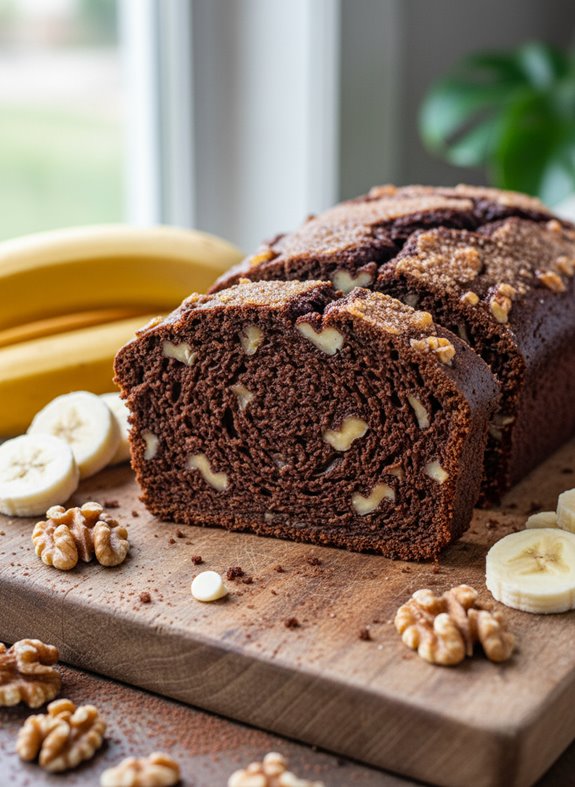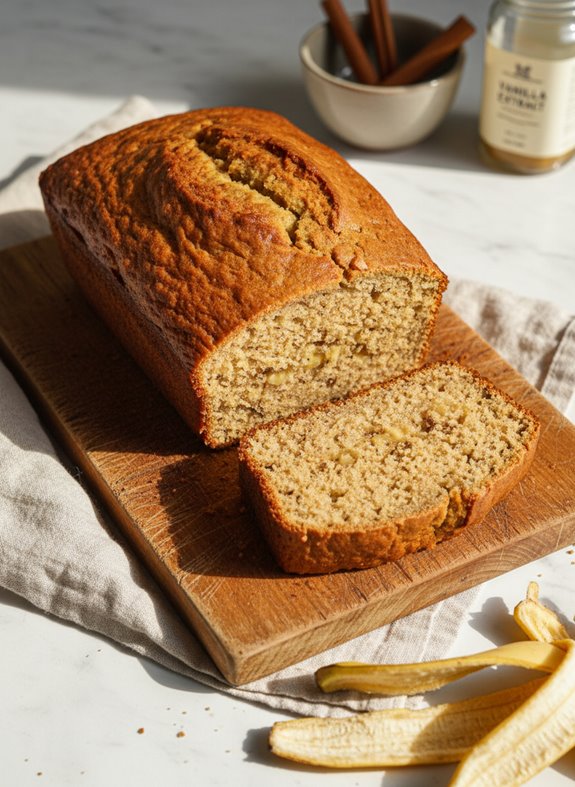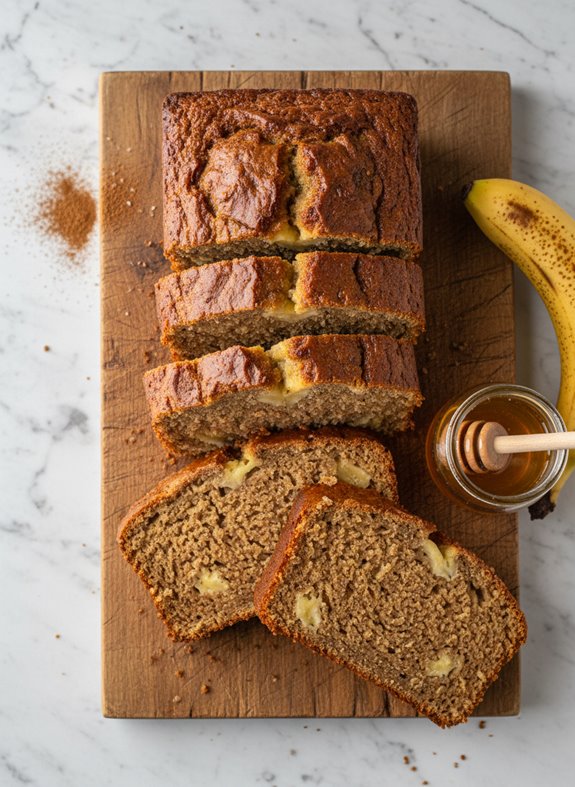Why You’ll Love this Heritage Fruitcake
While countless fruitcake recipes have come and gone over the decades, Tom Lester’s heritage fruitcake stands in a class of its own. I’m talking about a truly magnificent creation packed with a pound each of cherries, pineapple, figs, dates, raisins, and more—all married with warm spices and a touch of brandy or whiskey.
What makes it special? The slow baking process at just 225 degrees gives this cake its distinctive character.
And unlike those doorstop versions you’ve suffered through, this one actually tastes divine. The aging process—a full month wrapped in wax paper—transforms it into something truly extraordinary.
What Ingredients are in Heritage Fruitcake?
Tom Lester’s heritage fruitcake is truly a labor of love that requires an impressive array of ingredients. What makes this recipe so special is the generous quantities of fruits and nuts that create its rich, complex flavor profile.
You’ll need to gather quite a shopping list before initiating this baking adventure, but the results are absolutely worth the effort.
- 1 pound candied cherries
- 1 pound candied pineapple
- 1 pound citrus peel
- 1/2 pound candied orange peel
- 1 pound dried figs
- 1 pound pitted dates
- 1 pound raisins
- 1 pound currants
- 2 1/2 pounds pecans
- 1/4 pound black walnuts
- 12 eggs
- 1 pound butter or margarine, softened
- 4 cups all-purpose white flour
- 2 cups sugar
- 1 cup dark molasses (sorghum, ribbon cane, or blackstrap)
- 1/2 teaspoon baking soda (dissolved in the molasses)
- 1 tablespoon ground cinnamon
- 1 teaspoon ground allspice
- 1/2 tablespoon ground cloves
- 1 tablespoon nutmeg
- 1 tablespoon vanilla extract, brandy, or whiskey
- Additional brandy for aging
When shopping for these ingredients, quality matters tremendously. I recommend seeking out the freshest dried fruits and nuts you can find, as they’ll directly impact the flavor of your finished cake.
The recipe also gives you some flexibility with the molasses (choose between sorghum, ribbon cane, or blackstrap) and flavorings (vanilla, brandy, or whiskey). Your choice here will subtly influence the cake’s final character, so feel free to customize based on your personal preferences.
How to Make this Heritage Fruitcake
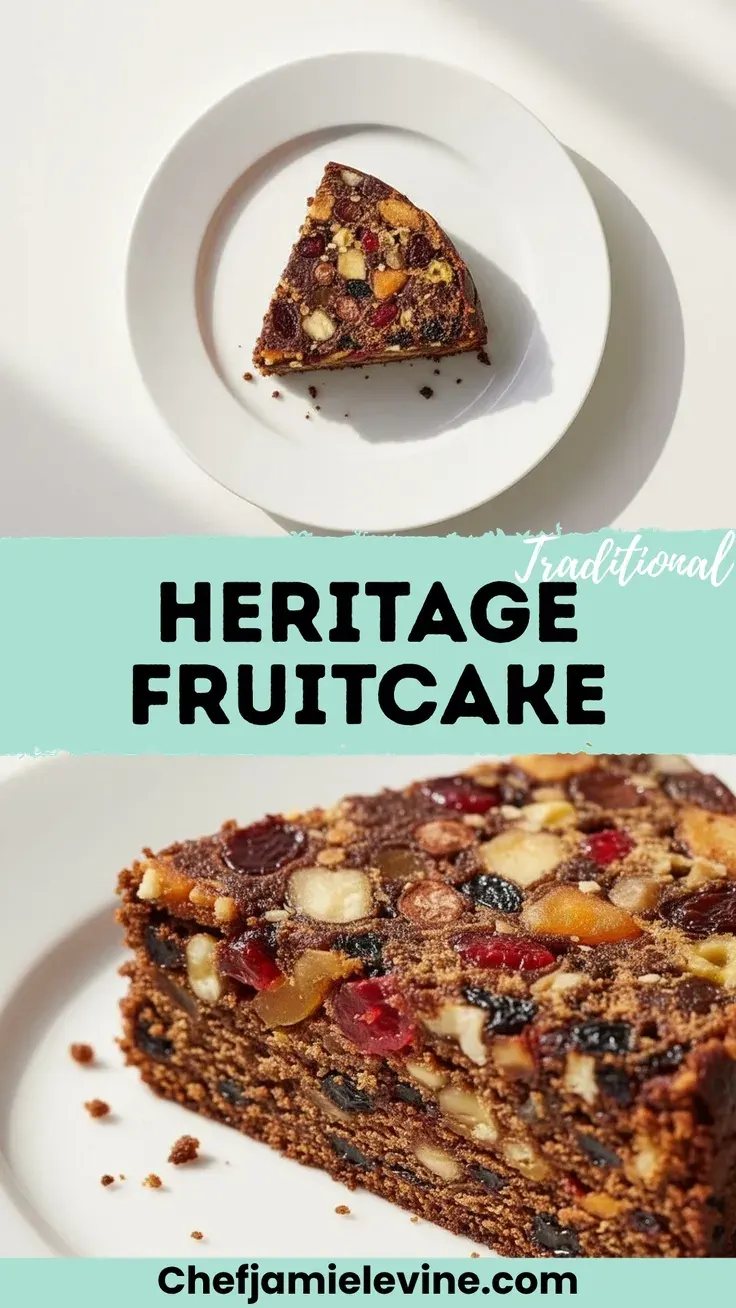
Making Tom Lester’s heritage fruitcake begins with thorough preparation—and trust me, you’ll want to set aside a good chunk of time for this culinary journey. Start by preheating your oven to a low 225 degrees, which allows for the slow, gentle baking this dense cake requires.
Then comes the meditative process of preparing your fruits and nuts: chop the 1 pound of candied cherries, 1 pound of candied pineapple, 1 pound of citrus peel, 1/2 pound of candied orange peel, 1 pound of dried figs, 1 pound of pitted dates, 1 pound of raisins, 1 pound of currants, 2 1/2 pounds of pecans, and 1/4 pound of black walnuts to your preferred size. Some bakers like larger chunks for more texture, while others prefer a finer chop—it’s entirely up to you.
Place this colorful mountain of fruit and nuts in a large pan (a turkey roaster works perfectly) and set it aside while you prepare the batter.
The next steps require some organization and a powerful mixer—those 12 eggs and 1 pound of butter aren’t going to blend themselves! Beat the eggs in a large mixing bowl and set them aside. In your electric mixer, cream the softened butter or margarine until smooth. While that’s happening, lightly dust your fruit and nut mixture with just enough of the 4 cups of flour to coat each piece—this prevents everything from clumping together.
Now comes the magic: to your creamed butter, add the beaten eggs, 2 cups of sugar, 1 cup of dark molasses (with 1/2 teaspoon baking soda dissolved in it), 1 tablespoon of ground cinnamon, 1 teaspoon of ground allspice, 1/2 tablespoon of ground cloves, 1 tablespoon of nutmeg, 1 tablespoon of vanilla extract (or brandy or whiskey), the remaining flour, and 2/3 cup of brandy. Let your mixer do the heavy lifting here, combining these ingredients into a fragrant batter.
The final assembly feels almost ceremonial. Make a well in the center of your fruit and nut mixture, pour in the batter, and mix and knead it together—almost like bread dough, bringing everything into a cohesive mass.
Pack this rich mixture into eight foil loaf pans that you’ve prepared with vegetable oil spray or butter and lined with well-buttered foil or parchment. Place the pans in the oven with a shallow pan of water beneath them to maintain moisture. The baking time is 3 to 4 hours, but requires vigilance—after 1 1/2 hours, watch for edges crisping before the top cracks (if this happens, lower the heat and refresh the water pan).
The cakes are done when numerous small cracks appear across the top. Once cool, remove from pans and dab liberally with brandy before wrapping each cake in wax paper, then aluminum foil, and finally newspaper.
The patience-testing part? Letting these beauties age in a cool place for at least a month, during which time the alcohol evaporates, leaving behind only its magnificent flavor and aroma.
Heritage Fruitcake Substitutions and Variations
Although this recipe has stood the test of time, there’s plenty of room to make Tom Lester’s heritage fruitcake your own with thoughtful substitutions and creative variations.
I’ve found that dried apricots or mangoes work beautifully in place of candied pineapple, bringing a tangy twist to the mix. Not a fan of black walnuts? Swap in almonds or hazelnuts instead.
For the boozy element, rum or cognac can replace brandy or whiskey, each lending its own distinctive character.
Some of my relatives prefer honey over molasses for a lighter flavor profile.
And honestly, who says you can’t throw in some chocolate chips?
Tradition meets innovation in your kitchen.
What to Serve with Heritage Fruitcake
Once you’ve perfected your version of this heritage treat, the next question becomes what to pair with it.
I’ve found a strong cup of black coffee creates the perfect balance against the rich sweetness. A small glass of brandy or whiskey—yes, the same you used in the cake—brings out those deep spice notes beautifully.
For something unexpected, try a sharp cheddar cheese alongside a thin slice. The savory-sweet contrast is divine.
When serving for afternoon tea, a dollop of fresh whipped cream or even a scoop of vanilla ice cream can transform this dense delicacy into a proper dessert course.
Final Thoughts
Tom Lester’s fruitcake recipe has traveled through generations for good reason—it’s simply exceptional.
The rich combination of fruits, nuts, and spices creates a cake that’s worth the effort and patience required.
I’ve found that giving these cakes as gifts brings more joy than I ever expected.
There’s something special about sharing a slice of history, wrapped in wax paper and memories.
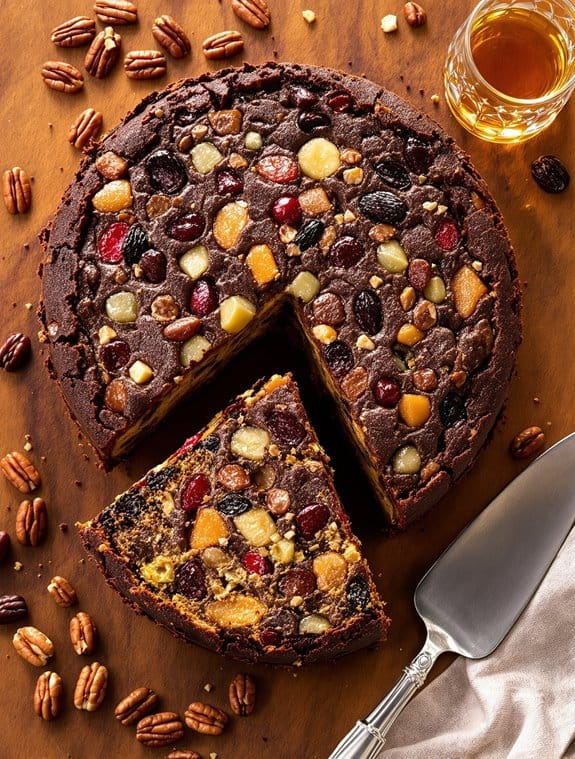
Heritage Fruitcake
Ingredients
Equipment
Method
- Preheat your oven to 225°F (107°C).
- Chop all fruits and nuts to your preferred size – larger chunks for more texture or finer pieces for a more uniform cake.
- Place the chopped fruits and nuts in a large container (a turkey roaster works well) and set aside.
- Beat the eggs in a large mixing bowl and set aside.
- In an electric mixer, cream the softened butter until smooth.
- Lightly dust the fruit and nut mixture with just enough flour to coat each piece, preventing them from clumping together.
- Dissolve the baking soda in the molasses and set aside.
- To the creamed butter, add the beaten eggs, sugar, molasses with baking soda, cinnamon, allspice, cloves, nutmeg, vanilla extract (or chosen spirit), remaining flour, and 2/3 cup of brandy. Mix thoroughly to form a fragrant batter.
- Make a well in the center of your fruit and nut mixture, pour in the batter, and mix thoroughly, kneading it together like bread dough until everything is well incorporated.
- Prepare eight foil loaf pans by spraying with vegetable oil or buttering them, then line with well-buttered foil or parchment paper.
- Pack the mixture evenly into the prepared pans.
- Place the pans in the oven with a shallow pan of water beneath them to maintain moisture during baking.
- Bake for 3 to 4 hours. After 1½ hours, watch for edges crisping before the top cracks – if this happens, lower the heat slightly and refresh the water in the pan.
- The cakes are done when numerous small cracks appear across the top.
- Allow the cakes to cool completely before removing from pans.
- Once cool, dab each cake liberally with additional brandy.
- Wrap each cake first in wax paper, then in aluminum foil, and finally in newspaper.
- Store the wrapped cakes in a cool place and allow them to age for at least one month before serving.

